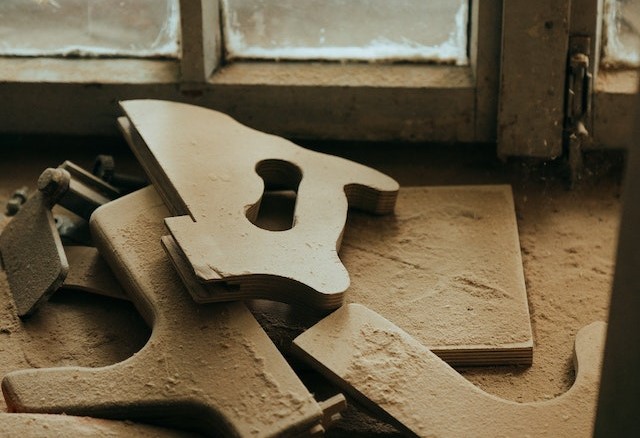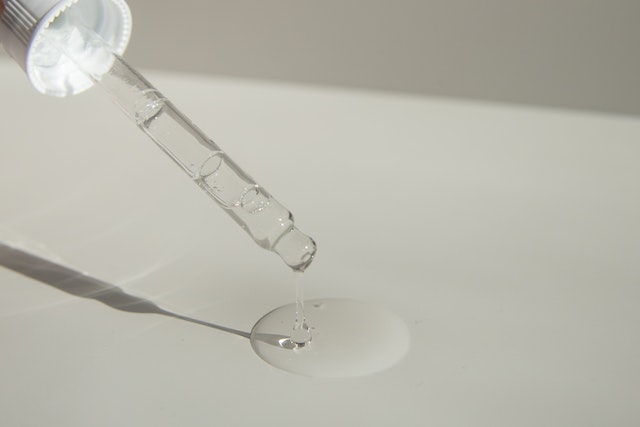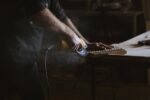How To Create A Beautiful Wood Finish For Your Project

A beautiful wood finish can make all the difference in bringing out the natural beauty of your woodworking project. From staining to varnishing, there are countless options for finishing your woodwork. However, with so many choices available, it can be overwhelming to determine which one is best for your project.
In this article, we’ll guide you through the process of selecting the right finish for your project and provide step-by-step instructions on how how to create a beautiful wood finish for your project to achieve a beautiful, durable wood finish. Whether you’re a beginner or a seasoned woodworker, this article will help you create a stunning finish that will make your project stand out.
Gather Your Materials

Oh man, if you’ve already got vision for a wood project, the first move is to get your materials together. I’m talking about tools, supplies and all the extras – without these you can kiss that beautiful wood finish goodbye.
First up, let’s get your tools sorted. Now I’m not talking about an axe, although one of those would come in handy! What I’m really referring to is an electric sander, a paintbrush and some tack cloth. Oh, and don’t forget the safety googles, you don’t want to get sawdust in your eyes, now do you?
Now we gotta find the hardware. This can be wood, varnish and all sorts of stains. Beware though, not all wood finishes are created equal – some stains will give you a darker, richer tone and others will provide a softer, more nuanced variation. Do a bit of research so you know the range of options you have.
Last but not least, grab your supplies – nails, screws, sealant, and a brush to name a few. Oh, and don’t forget the sandpaper! Depending on the look you’re going for, different grit sizes will give you different surfaces – just be sure to experiment on scrap material first and always wear your safety googles.
Well, that’s it! Arm yourself and get ready to start creating that stunning wood finish. Good luck my friends!
Gather Tools
When it comes to creating a beautiful wood finish for your project, it’s important to have the right tools. Gather whatever you will need beforehand – trust me, you don’t want to realize half way through the job that you’re missing something.
Let’s start with sanding. You’re gonna need to break out the sandpaper for this task. Make sure to pick up some fine- grade sandpaper for the first sanding pass, and maybe some medium-grade for whatever corners you might have missed. Gonna need some sanding blocks or sponges too, if you wanna get real fancy.
You’ll probably want to use a rag or a brush to apply the wood stain. Just throw those in a bucket nearby when you are getting started. And don’t forget your safety glasses and a dust mask, unless you want wood particles flying in your eyes and lungs.
For the finishing touches, you’ll need some wax or varnish. Unless you don’t care about the overall look and just want to finish quickly. I also recommend getting a different brush to apply the topcoat, so you can save the brush used for staining for future projects.
Oh, and don’t forget the cleaning supplies. You’ll want to make sure that your tools and material are always clean and in top condition, no matter what type of project you are working on.
In the end, it’s all about having the tools on hand that you need for the job. And trust me, you will thank me once you’ve finished up those gorgeous wood projects. So get out there and get to it!
Collect Supplies
If you’re here, it’s probably because you’ve decided to take on a project that requires you to achieve a beautiful wood finish. Well, the first piece of advice I can give you is to make sure you have all the supplies you need on hand before you start. There’s nothing worse than starting your project, only to realize you’re missing something important!
For this project, you’ll need to collect the following supplies: wood stain, a quality sealer or top coat, a fine-grit sandpaper, a rag or brush, and optionally a wax. Now, you might be thinking, “Do I really need all that stuff?” I’m here to tell you that YES, you most certainly do. Not only will these supplies ensure a successful project, they’ll also help you achieve the beautiful wood finish you’re aiming for.
When it comes to wood stain, you have a few different options. You can select a natural wood color, or choose from a variety of stains if you want to give your project a little extra character. If you’re feeling really daring, you can mix different colors together to create your own custom shade. For a top coat, you’ll want to look for a product that is specifically designed for wood sealing.
When it comes to the sandpaper, you’ll want to get the finest grit you can find. This will help to remove any surface imperfections and will prepare the surface for staining and sealing. As far as the rag or brush, you’ll want to use whichever you feel more comfortable with for applying the stain. If you’re using a rag, make sure it’s a lint-free variety.
Finally, if you want to achieve a beautiful, glossy finish on your project, you may want to consider using wax. This is an optional step and will take additional time, but if you really want to go the extra mile, it’s definitely worth considering.
Now that you have all the supplies you’ll need, you’re ready to start your wood finishing project. Good luck!
Prepare the Surface

Listen up, rookies! Step 2 is where the real work starts, so don’t think that you can slack off now. We’re gonna prepare the surface so that it’s ready to be stained and sealed.
First up, grab a piece of sandpaper (it’s ok if ya don’t know what grit to use, just know that the higher the number, the finer the sandpaper) and lightly go over the surface. Now, I know a bunch of you are saying, “What if I’m working with an already-finished wood surface?” Well, if it’s already been finished, don’t even bother with the sanding. It’s not gonna do ya any good.
Once you’re done with the sanding, make sure you remove all of the dust. If you’ve got a shop vac, that’s the best way to do it. Otherwise, a damp rag will do. And don’t forget to wear a mask, so you don’t inhale any of that dust.
Not too hard, right? Alright, now it’s time for Step 3. Grab your stain, and let’s get to work!
Lightly Sand
Hey Folks, I’m here to teach you how to create a beautiful wood finish for your project. Now the first step is to gather all the materials and supplies you’ll need for the project, and then it’s time to prepare the surface.
Preparing the surface is super important and a quick and light sanding is a great way to get started. Now don’t get all excited – I’m not talking about sanding down the entire surface of your wood. All you have to do is give it just a quick once over and it can be done pretty quickly.
What you need is either a handheld sanding block, or some medium grain sandpaper. Just lightly go over the surface of the wood, focusing on any rough patches. Don’t overdo it – you just want to take off any rough, extended pieces. This should only take a few minutes.
Then once you’ve lightly sanded the surface all over, you want to use a damp cloth to get rid of any dust or debris left over. After that, you’re ready to move on to the next step! Who said creating a beautiful wood finish was gonna be hard? You got this!
Remove Dust
I feel like it’s a pretty obvious step, but you need to remove dust from your wood project before you start working on it. If you don’t, the wood finish might end up looking like something a 5-year-old created.
The best way to remove the dust is to use a vacuum cleaner. You can also use a cloth dampened with mineral spirits if you don’t have a vacuum cleaner. Make sure you use gentle strokes and don’t scrub too vigorously. You don’t want to damage the surface of the wood.
Once the dust is removed, you should use a tack cloth to remove any residual particles. Make sure you cover every area of the project in case you missed anything when you were vacuuming.
If your project has a lot of detailed or intricate areas, you might need to use something like a toothbrush to get the dust out of them. It’s a bit more labor-intensive but it’s worth it if you want a beautiful wood finish.
When the dust is removed, the next step is to work on the surface of the wood. But if you don’t remove the dust first, the stain or sealer might not stick correctly and the results won’t be as good. So, it’s important to take your time when removing the dust.
Now that you know how to remove dust from your wood project, you’re ready to move on to the next step. Good luck and happy woodworking!
Apply Wood Stain
So, you’ve got all your tools and supplies and you’re ready to apply some wood stain? Well, let me tell you, you’ve come to the right place! Applying wood stain doesn’t have to be a daunting task – with a few simple steps, your project will be looking fabulous in no time.
First things first – you will want to dip either a brush or rag into the wood stain of your choice. Don’t worry, if you picked the wrong color this time, you can always start over. Once your brush or rag is nice and saturated with the wood stain, it’s time to apply it to your project. You’ll want to go with the grain of the wood, just like you would when sanding, in order to achieve the best results.
Now, this part is key, so pay attention. Once you’ve applied your wood stain and the surface is evenly covered, you must allow it to dry completely before proceeding. I mean COMPLETELY dry – no short-cuts here. Don’t be tempted to rush it, or you will be disappointed with the outcome. Once it’s dry, you can move onto the next step and turn your project into something truly special. “
Dip the Brush or Rag

If you’re planning to give your project a beautiful wood finish, then it’s important to get the basics right and that starts with a good quality brush or cloth. You really don’t want to skimp here, as a nice brush and rag will make a world of difference.
The first step is to dip your brush or rag into the wood stain. You don’t want to use too much, but you don’t want too little either. If you are using a brush, swirl the brush around in the stain and then tap off the excess gently against the rim of the container before applying it to the project.
If you are applying the stain with a cloth rag, simply dip it into the stain, rubbing the fabric to help distribute the stain evenly. You don’t need to use a lot of pressure and I always recommend that if you are using a cloth you go in one direction.
Now, if you’d prefer not to dip the brush or rag straight into the wood stain, you can always pour some stain onto a plate or plate-like object and use a brush to apply it to the project. This is a nice way to control the amount of stain you are using, as you can get a nice even coating without going overboard. Alternatively, if you are using a rag or cloth you can simply wring out a portion of the stain onto the plate and then apply it to your project.
Once you have that rag or brush dipped in the wood stain, you’re ready to apply it to your project! Just take care not to apply it too heavily and evenly distribute the stain across your project. Now, you can feel free to have a little fun and create a few more color variations in the process. It’s completely up to you and your own imagination.
And that’s it! It really is that simple to apply the wood stain. With a little practice, you’ll soon be getting a professional-looking wood finish that you can be proud of. So don’t let the thought of applying wood stain stop you from creating that beautiful project you have in mind. With these few helpful tips, you’ll be a master of wood finishing in no time.
Apply the Stain
As they say, a good project starts with a good foundation and when it comes to creating a beautiful wood finish, that means you need to properly apply wood stain. Let’s get started?
One think to keep in mind when applying wood stain is that it’s a bit of an art – you want things to look nice and even – so get comfortable. Now, let’s go through the steps.
First things first, grab your tools. You’re going to need a brush or a rag, and depending on the type of finish you’re going for and the type of wood you’re staining, you might need some gloves too.
Next up, dip your brush or rag into the stain and make sure you lift it up with the same amount of stain that you would like your final project to display. Now it’s time to start staining.
Here’s the thing – it’s all about the way you move your brush. You don’t want to move your brush with long strokes, instead you want to dab it gently in the spots you’re trying to cover, buff it lightly every so often for more coverage, and then go back and buff again for a more even finish.
For darker finishes, you can add more stain where necessary, and for lighter finishes, you can try to lighten the coat of stain by adding a little bit of mineral spirits and buffing again.
Finally, once you’re happy with how it looks, step back and allow your project to dry.
And that’s it! If you took your time, you should now have a beautifully stained wood project that you can proudly show off.
So there you have it. It may take you a few tries to get the perfect finish – but don’t worry, practice makes perfect. Now, go out there and show off your newly finished project!
Allow to Dry
Gee whiz. Here we are at the almost-end of the wood finishing project. Just two more steps to go. The third step is to apply the wood stain. You only need to dip a brush or rag into the wood stain and then glissade it on. And don’t worry too much, it’s not rocket science. Yeah! You can totally do it! Now, after you’ve applied the stain, what do you do? Ah, yes, I remember. You gotta allow it to dry.
Allow to dry. If a wood finish project has been fired up in here, allow it to dry must be yelled. It ain’t gonna happen if it ain’t dry. So don’t rush it. You gotta learn to wait. For how long? Umm, for around 8 to 10 hours. Hey, don’t worry, it won’t take that long if the weather’s nice and dry. But don’t worry if it takes a day or two, it’s all good.
So once the wood stain has dried, what then? Are you ready to finish? No, not yet. Now you need to be patient and let the wood do its thing. As Edgar from the great play “Hairspray” said, “They don’t call it patience for nothing”.
And here’s something you can do to keep yourself busy during this wait time—hum a tune, dance a few moves, munch on a few snacks, write a poem. But no matter what you do, don’t rush to the finish without allowing your project time to dry. Just ask any professional wood finisher and they’ll probably tell you that that’s the quickest way to a failed project. So keep it chilled and when the time comes, you’ll know it’s time to make that final touch up. It won’t be long now.
Apply the Finish
You’ve been grinding away, prepping that wood in preparation for your project and now it’s time to get to the fun part! Applying the finish is one of the most rewarding steps in the process, so let’s get to it!
Ready? Let’s go!
First, you’ll want to apply the sealer or top coat using a brush or rag depending on what type you are using. For example, lacquer needs to be applied with a brush, while varnish needs to be applied with a rag. Make sure to evenly apply the coat, following the directions on the container for the best results.
In the case of aerosol finishes, it’s important to spray from a least a foot away from the surface so you don’t get too much in one spot. Hold the can about 6 to 12 inches away from the surface to avoid drips and let it settle. When spraying, keep the can moving or make repeated passes or you’ll get uneven results.
If you’re working with a natural stain, you may want to apply several thin coats before applying the finish. Make sure to sand lightly between coats to achieve the desired results.
When everything is dry, inspect the surface for bumps or rough spots and use a light grit sanding sponge, steel wool, or extra fine sandpaper to get rid of them. Make sure the surface is clean and free of dust before the final application.
Now that your surface is ready, take a brush and apply the top coat. Like with the stain, you’ll want to use either a gel or liquid finish, depending on the results you’re looking for. Brush the sealer on a few thin layers, making sure to apply it evenly and work in one direction.
If you’re using a wax for the finish, go ahead and apply it after the sealer is dry. This will add a nice protective layer to the wood, which will help it last for many years. Just make sure to keep it well-protected from the elements to ensure its longevity.
And there you have it! You’ve just learned how to apply a beautiful wood finish to your project, and with just a few steps you can create something that will last for years. Congratulations!
Apply the Sealer or Top Coat

Ah, finally it’s time for the fun part- applying the sealer or top coat for a beautiful wood finish! Before you start, make sure you’ve got your safety goggles on and you’ve adequately ventilated the space.
Now, here’s where you can get creative – you can choose to use a variety of sealer or top coat products, including polyurethane, linseed oils, or wax. If you’re feeling adventurous, you can experiment with stains and pigments to give the wood a unique final look.
Once you’ve decided which finish to go with, it’s time to apply the sealer or top coat. Depending on the type of product, you’ll want to use anything from a paintbrush to a hand towel to do the job. For example, if you’re going with polyurethane or linseed oil, a paintbrush will work just fine. For wax, a hand towel should do the trick.
Don’t be too quick to rush this step – use smooth, gentle strokes when applying the sealer or top coat. Make sure you get every nook and cranny and don’t forget to take extra time on the corners, edges and other hard-to-reach areas.
If you have multiple coats – and you should if you’re looking for a beautiful wood finish – be sure to allow enough drying time between the different coats. Depending on how ‘thick’ the coat you decide to put on is, the drying time can range from four hours to an entire day.
And there you have it – after completing this final step, you’ll be one step closer to achieving a beautiful wood finish! So go ahead and make sure you follow these instructions carefully and you’ll be well on your way to becoming an expert on finishing wood.
Allow to Dry
When it comes to finishing up a wood project, one thing you MUST do is – Allow to Dry! Sure, things might look shiny and new right when you put the stain or top coat on, but if you don’t let the material rest after you apply it, it won’t secure the wood properly and you’ll end up with a mess! So, make sure you let the wood dry!
Let me tell you a few jokes while you let that wood dry. So… why did the bee go to the doctor? Because he was feeling a bit “wax”-y (get it?).
I think it’s so funny when people take their wood projects with such seriousness. I mean, you have to let it dry, but that doesn’t mean you can’t enjoy the process. That’s why I’m here to give you a few laughs while you allow the product time to dry.
Now for some more jokes. How did the tree feel when it got a new finish? Surly pine (get it?).
It’s so great to have a few laughs while you let the wood dry. It really makes the process of creating a beautiful wood finish go by so much faster. Plus, when you focus on having a few laughs while you wait, it helps you appreciate the work you put into the project even more.
So, while you wait, here’s one last joke. What did the woodworker say when someone asked him how long to wait for the wood to dry? He said, “Just give it some elm”.
See, now your wood should be dry, or almost dry, and you can move on to the next step. Now that’s what I call a woody success, and the best part is that it comes with a few laughs too!
Final Touch Up
Ahhh, the final flourish! This is where your project will go from looking ‘Ok’ to ‘Beautiful’. You’ve got to be gentle with this step. Here we go.
So first, let’s get that sandpaper out, but don’t go getting overly zealous and sand too much. Just find any imperfections and smooth them out a bit. Alright, did that. Now use a cloth to remove the dust and particles from your project.
Now here’s the crowning touch. Wax on, wax off. Waxing your project is an optional step but it adds that extra bit of protection and shine and gives it a whole new level of impressive gorgeousness. Just select a wax that is made for woodworking, and follow the directions on the container. This will add a nice finish that looks like a polished gem. Or, depending on your preference, you can just leave it as it is.
And, that’s it! You’ve created a beautiful wood finish for your project. Now sit back, admire your work, and bask in the glow of a job well done!
Sand the Surface Again
Geez, I thought we were done here! Oh, now it’s time to sand the surface again? Alright… I suppose if we want to get that beautiful wood finish, we gotta do what we gotta do.
To sand the surface again, we will start with a lighter grit of sandpaper than we used for the initial sanding. You’ll want to use a sandpaper that is about a grade or two lighter than the original, like 120 to 150 depending on how coarse the wood finish already is.
Grab your sandpaper and some water. Move the sandpaper in a circular motion with light pressure. Dip the sandpaper in the water occasionally to keep the sandpaper from clogging. Make sure to aim for a smooth, even finish and avoid sanding too deep.
Depending on the type of wood, you can use either sandpaper or steel wool as you go. Steel wool is ideal for softer woods, as sandpaper may damage them. For harder woods, sandpaper works better.
Once you’ve finished sanding, you should have a pretty smooth surface. Wipe away any dust or debris with a damp cloth. This will help the new finish stick better.
Now that you have a clean, smooth surface, you can move on to the last step! You’re almost done! Just one more step to go and you will be ready to show off your beautiful wood finish.
Wipe Away Dust
Man, brushing away dust off your project is a necessary part of this process, but also very tedious! Wiping away dust is pretty easy, though. All you need is a damp cloth, which you probably already have around the house.
Once you’ve lightly sanded the surface and collected all the dust, take the damp cloth and carefully run it over the surface. Make sure it is damp and not overly wet, otherwise it will be more difficult to collect the dust. Move the cloth gently over the surface and the dust should start to come off the surface.
Once the dust is coming off, keep wiping until the cloth comes up clean. Keep in mind, you don’t want to apply too much pressure when wiping the surface, or you may end up accidentally knocking down some of the wood fibers.
When finished, take a clean, dry cloth and give the surface one last wipe. This will help remove any remaining dust and also helps to remove any excess water from the damp cloth.
Once you’ve finished wiping away the dust, it’s time to move on the the next step. You can leave the surface to dry for a few minutes, or you can move on to the next step right away. It’s up to you, but just make sure that the surface is completely dry before continuing.
Finishing off a project is no joke, and it takes hard work, dedication and proper technique. Sweating and grinding is usually how I get things done, but when it comes to wiping the dust away, that’s something I leave to the professionals! It’s not the most exciting part of project, but it’s an important one, and it’s essential for achieving a perfect, beautiful finish.
Wax the Surface (optional)

Oh wow, the final step in creating a beautiful wood finish for your project is the optional waxing of the surface! I know what you must be thinking – I should go the extra mile and do some waxing? Absolutely y’all – if you’re feeling extra fancy and want to take your wood project to the next level, then waxing is the way to go.
Now, waxing the surface of your wood project should not be this big daunting task. All you need is some wax (beeswax oil or paste wax would do for this particular project) and a clean cloth. If waxing is new to you, don’t worry, you’ll grasp the concept in a jiffy.
Start by applying a small amount of wax to your finger or your cloth. Then, using light pressure and circular motions, spread the wax across the surface of your project. Once you’re done waxing, you’re good to go – the project is finished and absolutely beautiful.
And just when you thought you were done, you can actually buff the surface of your wood project for an even shinier look. Not bad at all for working on a wood project for only a few minutes, you have yourself a makeover fit for the red carpet – or your living room.
So, if you have a project that requires a little extra lovin’ – don’t be shy and go that extra step of waxing the surface. It’s only optional – but offering an extra protective layer of wax never hurts. Plus, it can make the grain of your wood stand out even more, so the world can be dazzled by the beauty of your piece.
So don’t be discouraged by this extra ‘optional’ step – apply a wax to the surface of your project, and you’re good to go. We’ll see you wearing a beautiful wooden cape with a glossy finish soon! Happy waxing!






